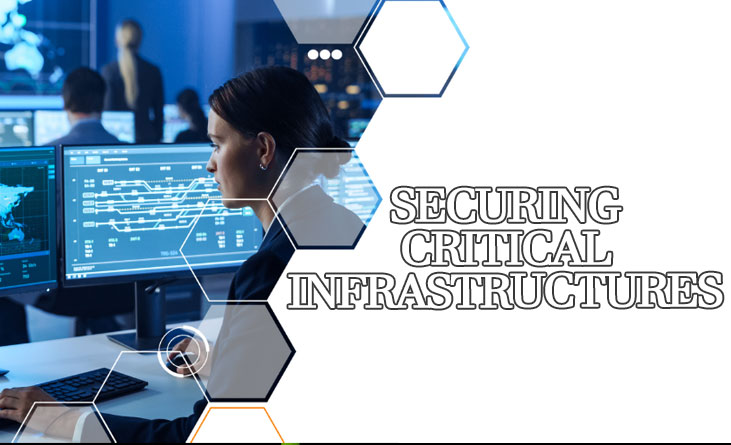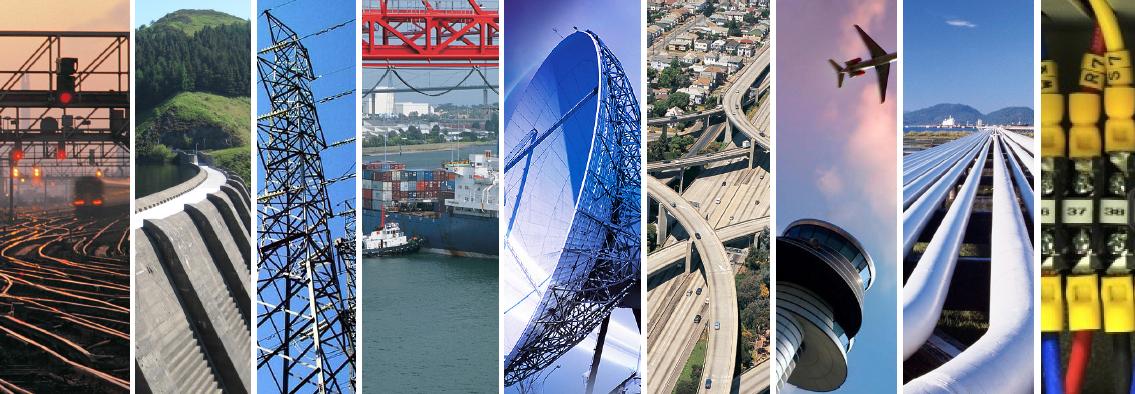Infrastructure represents the very essence of modern life and is the bedrock upon which the economy, security, and well-being of society rest. These valuable assets, systems, and networks play an indispensable role in ensuring the efficiency of nations, their economic strength, security, and public health.
However, these essential and irreplaceable services are under constant threat from various sources. These threats span the digital realm, where large-scale cyber-attacks are evident, as well as the physical world, where natural disasters and physical attacks cast a shadow of vulnerability
This comprehensive guide begins a journey to explore the critical need to protect critical infrastructure. It captures the complexity of risks and threats faced by these industries, thus providing valuable insights and best practices to address these threats.
From strategies that strengthen cybersecurity defenses to resources enforcing physical security, the guidelines serve as a beacon for the resilient operation of these infrastructures that are dependent on the s It is increasingly clear that protecting these lifelines is not only necessary but also an essential duty to preserve national security, economic prosperity, and public interest
Why Securing Critical Infrastructures Matters
Critical infrastructures span 16 sectors, including energy, transportation, communications, healthcare, and more. According to the Department of Homeland Security, incapacitating or destroying critical infrastructures would have a “debilitating impact” on national security and public welfare.1
Recent statistics highlight the growing risks:
- 89% of firms in electricity, oil/gas, and manufacturing have experienced cyberattacks impacting production and supply in the past year.2
- 150+ industrial operations have been impacted by physical attacks leading to consequences in 2022.3
Securing these vital assets is crucial as cyber and physical threats rapidly evolve.
Top Threats Facing Critical Infrastructures
Critical infrastructures confront an array of potential threats that span both the digital and physical realms. These threats pose significant risks to the seamless operation of vital systems, thereby impacting national security, economic stability, and public safety. Common dangers to these systems include:
Cyber Threats
In the ever-evolving landscape of the digital age, cyber threats have emerged as a pervasive and potent menace to the integrity and security of critical infrastructures. These threats transcend geographical boundaries and have the potential to disrupt vital systems that underpin modern societies. Understanding the intricate realm of cyber threats is essential, as it forms the foundation for crafting effective industrial cybersecurity strategies to safeguard critical infrastructures.
- Ransomware: Malicious software that encrypts systems until a ransom is paid. Ransomware can cause extended outages.
- Phishing: Emails or sites that trick users into revealing credentials. Gives attackers access to systems.
- Insider threats: Employees or contractors who intentionally exceed access.
- Supply chain compromises: Attacks propagate through trusted third-party connections.
Physical Threats
Physical threats also pose a risk to Infrastructure. Any changes from external forces can cause massive harm and damage to several sectors. Some common threats include:
- Terrorism: Physical attacks meant to disrupt operations and cause harm.
- Insider threats: Personnel who intentionally damage or destroy systems.
- Natural disasters: Events like earthquakes, flooding, and severe weather that can impair infrastructures.
Assessing Critical Infrastructure Risks
To manage risks, organizations must conduct thorough assessments. The Cybersecurity and Infrastructure Security Agency (CISA) offers specialized voluntary assessments of critical assets. These reviews help partners:
- Identify vulnerabilities in physical and cybersecurity.
- Understand the potential consequences of attacks.
- Prioritize resources to address gaps.
Moreover, organizations must proactively institute and sustain robust risk management programs that serve to identify, evaluate, and mitigate these multifaceted threats. This ongoing vigilance and preparedness are pivotal in ensuring the resilience of critical infrastructures in the face of evolving dangers. By systematically assessing and addressing potential risks, organizations can stay ahead of emerging threats, fortify their defenses, and safeguard the stability and security of these foundational systems.
Best Practices For Securing Critical Infrastructures
Securing critical infrastructures requires a multilayered approach. Key strategies include:
- Access controls: Allow only authorized personnel to access facilities and systems. Use identity verification and multifactor authentication.
- Audits: Routinely audit systems and assess risks to spot gaps. Perform vulnerability scanning and penetration testing.
- Incident response plans: Have detailed playbooks for detecting threats and responding quickly. Conduct drills.
- Employee training: Educate all personnel on security best practices. Promote a culture of vigilance.
- Partnerships: Collaborate with vendors, law enforcement, and government agencies on intelligence sharing and emergency planning.
- Redundancies: Have contingency plans and backups to reduce disruption from outages.
- Cyber hygiene: Use antivirus software, encrypt data, and regularly patch systems.
Frequently Asked Questions
What are the most common cyberattacks on critical infrastructures?
Ransomware, phishing, insider threats, and supply chain attacks are among the top cyber risks facing critical infrastructures presently. These threats can lead to outages, data theft, and even physical consequences.
How can I assess risks to my organization’s critical infrastructures?
Leverage resources such as CISA assessments, along with internal audits, penetration testing, and vulnerability management programs. Evaluate both cyber and physical risks and analyze potential impacts and likelihoods.
What are some best practices for securing critical infrastructures?
Top strategies include implementing layered access controls, training personnel, developing incident response plans, building in redundancies, and following cybersecurity best practices for systems.
Conclusion and Call to Action
In conclusion, the imperative of securing critical infrastructures cannot be overstated. The resilience of these infrastructures is not only vital for national security but also a linchpin for economic stability and the overall well-being of the public. The ever-evolving landscape of threats, encompassing both cyber and physical dangers, necessitates a proactive and comprehensive approach to security.
The first crucial step is understanding these risks, followed by the diligent work of fortifying defenses against potential threats. Equally important is preparing for incidents, ensuring that there is a well-defined plan in place to respond effectively when challenges arise.
The call to action is clear: it is incumbent upon organizations to place security at the forefront of their priorities. Readers are encouraged to take the initiative by conducting thorough risk assessments, implementing robust controls, and fostering collaboration with stakeholders. By actively engaging in these measures, we can collectively contribute to the safeguarding of these foundational assets, ensuring their continued operation in the face of an ever-evolving threat landscape.



